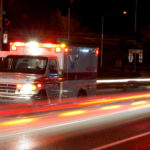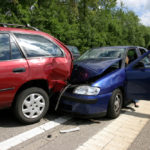The CNA Just Released Their Slip and Fall Report And It Does Not Look Good
CNA, a leading provider in risk management services for businesses and professionals across the world, recently reported that floors in over half of their tested sites failed to produce “a dynamic coefficient of friction (or DCOF) level above the minimum threshold of 0.42.”
What does that number mean? Essentially, through a series of calculations, the closer the coefficient of friction is to the value of 1, the greater frictional properties the floor has. This means a floor with a coefficient closer to 1 would have a lower chance of a slip and fall incident occurring than a floor with a number further away from the value of 1. Overall, this means that many businesses’ fall prevention programs could possibly overlook how flooring selection and ongoing maintenance can contribute to avoiding slips and falls, as a personal injury lawyer Cheyenne WY residents trust can explain.
The senior vice president of CNA Commercial’s Risk Control stated that “slips and falls can happen anywhere, anytime, and to anyone, and addressing the slip resistance and maintenance of interior floors to reduce exposures is critical to enhancing floor safety.” The CAN’s report revealed that, while slip and fall accident claims occurred more frequently over time, the severity of the injuries fortunately did not increase.
The CNA’s report focused on slip and fall claims reported between January 1, 2010, and December 31, 2016. The pattern of high-frequency, low-severity slip and fall accident results was consistent with claims experienced in the greater risk control industry. Based on the results of the data, the retail and real estate industries were the most likely to have slip and fall accidents occur. The most severe slip and fall cases also occurred and were reported in these two industries.
The distribution of where these accidents occurred was broken down as such into four main areas:
- 40 percent occurred on walking/working surfaces; mainly, on entry flooring.
- 33 percent occurred on parking lot surfaces.
- 27 percent occurred on sidewalks leading to business entrances.
- Less than one percent occurred on interior office floors.
In response, the CNA identified four principles of floor safety that businesses should follow to prevent slip and fall from happening:
- Choose slip-resistant flooring, taking into consideration its properties as well as the space and environment.
- Test the floor for resistance under wet conditions, and use a tribometer to measure its levels of DCOF.
- Use cleaning methods and agents compatible with the type of floor; apply both as the manufacturers direct.
- Promote risk awareness in the physical environment, as well as floor-specific risk awareness.
Thanks to our friends and contributors from Cannon, Hadfield, Stieben & Doutt, LLC for their insight



